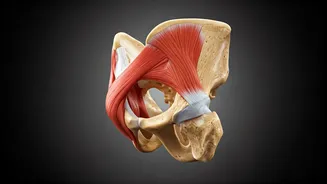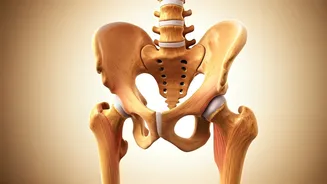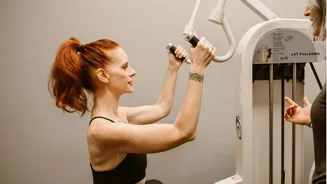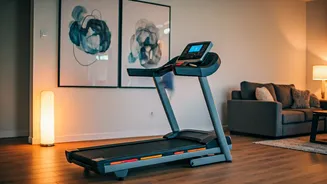What is Hip Flexibility?
Hip flexibility refers to the range of motion your hip joint allows. It’s about how easily you can move your legs and torso. Adequate hip flexibility is
critical for day-to-day activities, from walking and sitting to more complex movements. It affects how well you perform everything from simple chores to rigorous physical activities. Reduced hip flexibility can lead to several problems, including discomfort, pain, and a heightened risk of injury. Conversely, improved flexibility offers a range of benefits. Understanding your current hip flexibility level is the first step toward improving it. There are several ways to assess this, including simple tests like the 'figure-four stretch' or more comprehensive evaluations by a healthcare professional. Keeping your hips flexible can contribute to a much better quality of life.
Why Is It Crucial?
The importance of hip flexibility is multifaceted, extending far beyond the realm of sports and fitness. In everyday life, good hip flexibility allows for ease of movement, reducing strain on the lower back and knees. This is particularly relevant as people age, as decreased flexibility can contribute to balance issues and falls. It also impacts posture. Tight hip flexors can pull the pelvis forward, contributing to an exaggerated curve in the lower back, which results in discomfort and possibly chronic pain. Improved hip mobility, on the other hand, promotes better posture, reducing the strain on the spine and allowing for more efficient movement. Moreover, athletes and active individuals know the role of hip flexibility in performance. It enhances power and agility, whether you're running, jumping, or even turning quickly. It reduces the chance of injuries, which helps in consistent training and improving performance. For overall health, improved hip mobility often helps in increased blood flow to the area, leading to better nutrient delivery and waste removal. This can contribute to a reduction in muscle soreness and quicker recovery times.
Mobility Move Benefits
Hip mobility exercises offer numerous benefits that impact physical health and daily function. Regular practice can lead to a significant increase in the range of motion of the hips, allowing for more natural and fluid movement. Improved mobility also reduces the risk of injuries. By increasing flexibility, you make the hip joints less susceptible to strains and sprains during exercise or other activities. Moreover, hip mobility exercises can help alleviate existing pain, especially in the lower back, as they release tension in the surrounding muscles. Enhanced flexibility can contribute to improved balance and coordination, which is particularly beneficial for older individuals as it reduces the likelihood of falls. Incorporating hip mobility moves into a routine also promotes better posture. This can alleviate discomfort and improve core stability. Simple exercises such as hip flexor stretches, glute bridges, and hip rotations can be easily incorporated into any fitness regimen. These practices can significantly enhance well-being and overall quality of life.
Easy Exercises To Do
Numerous exercises target hip flexibility and can be easily incorporated into daily routines. The 'figure-four stretch' is a simple yet effective way to open up the hips. Lie on your back, cross one ankle over the opposite knee, and gently pull the thigh towards your chest. This targets the outer hip and glute muscles. Another great exercise is the 'pigeon pose,' which is slightly more advanced but highly beneficial. Start in a downward-facing dog position, bring one knee forward towards your wrist, and lower your hips to the floor. This opens up the hips and stretches the piriformis muscle. 'Hip flexor stretches' are crucial for counteracting the effects of prolonged sitting. Stand with one leg back, bend your front knee, and push your hips forward to feel a stretch in the front of your back leg. For a dynamic approach, try 'leg swings.' Stand near a wall for support and swing one leg forward and backward, then side to side, to improve mobility and warm up the hip joint. Remember to listen to your body and avoid pushing yourself beyond a comfortable range. Start slow and gradually increase the intensity and duration of the exercises as your flexibility improves.














